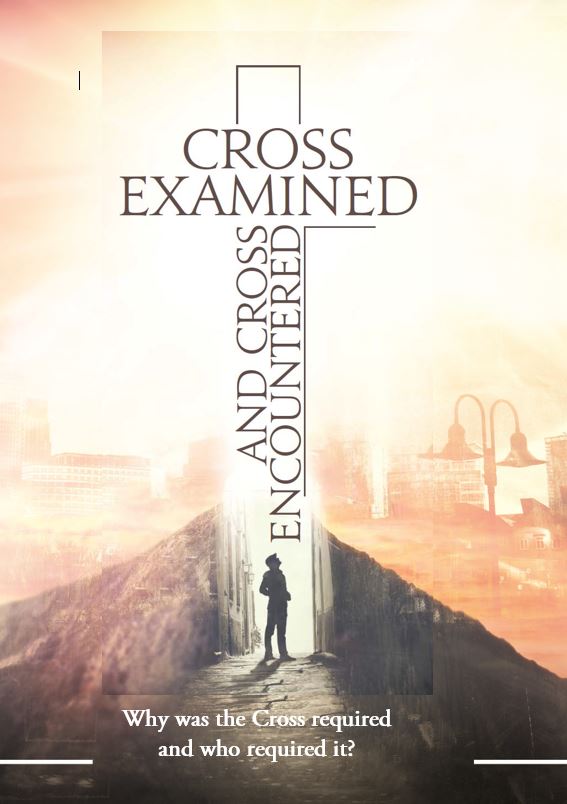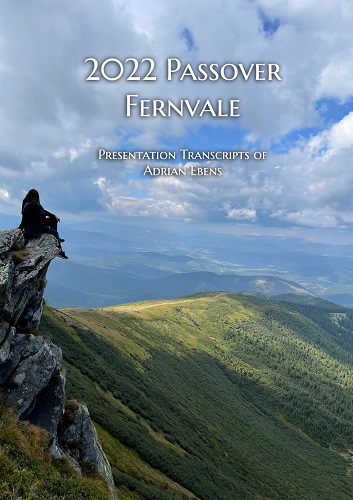The Leopard-like Beast of Revelation 13 - Part 1
`The Mouth of a Lion and the Feet of a Bear'
Part 3 in a series of articles on the Little Horn of Daniel 8, and the Leopard-like beast of Revelation 13.
When John, the `beloved disciple' of Jesus beheld the dark prophetic corridors of history, one beast which he beheld was an amalgamation of the four world kingdoms which preceded it - Babylon, Medo-Persia, Greece, and Pagan Rome. Under inspiration from our Lord Jesus Christ, John saw that it spoke with great authority, for it was like a Leopard, and had the mouth of a lion, and the feet of a Bear. This power was indeed antichrist, for `the dragon gave him his power, and his seat':
`And the beast which I saw was like unto a leopard, and his feet were as the feet of a bear, and his mouth as the mouth of a lion: and the dragon gave him his power, and his seat, and great authority. And I saw one of his heads as it were wounded to death; and his deadly wound was healed: and all the world wondered after the beast.' (Rev. 13: 2-3)
The mode of prophetic interpretation which is known as Historicism has traditionally ascribed this beast to the papacy, since John Wycliffe, the `morning star of the Reformation' subscribed to this view:
`By the dragon of the previous chapter [12 of Revelation], and the beast first introduced in this, we have the Roman power as a whole brought to view in its two phases, pagan and papal; hence these two symbols have each the seven heads and ten horns . . .
The Leopard Beast. - The seven-headed and ten-horned beast, more briefly the leopard beast, here introduced, symbolizes a power which exercises ecclesiastical as well as civil authority . . . . Take the dragon: what does it symbolize? . . . . The Roman empire in its pagan form, to which all must agree. But as soon as we say pagan, we introduce a religious element; for paganism is one of the hugest systems of counterfeit religion that Satan ever devised. The dragon, then is so far an ecclesiastical power that the very characteristic by which it is distinguished is a false system of religion . . . . We now come to the leopard beast of chapter 13. What does that symbolize? The answer still is, the Roman empire. But the dragon symbolized the Roman empire, and why does not the same symbol represent it still? - Ah! there has been a change in the religious character of the empire; and this beast symbolizes Rome in its professedly Christian form. And it is this change of religion, and this alone, which makes a change in the symbol necessary. This beast differs from the dragon only in that he presents a different religious aspect. Hence it would be altogether wrong to affirm that it denotes simply the Roman civil power.
To this beast the dragon gives his seat, his power, and great authority. By what power was pagan Rome succeeded? We all know that it was by Papal Rome . . . . the next great phase of the Roman empire after its pagan form was its papal. ' (Uriah Smith, `Daniel and the Revelation', p. 561,563.)
This beast paints a symbolic picture of the attributes which it began to exhibit after the tamid paganism of Daniel chapter 8 had been lifted up into the Christian church (Daniel 8: 11), with the papacy, or `little horn' of Daniel chapters 7 & 8 assuming the garb of Christianity, when in fact she is a continuation of the tamid paganism which was first manifested in ancient Babylon. Each identifying characteristic of this beast - which is expressed in the lineal heritage of the four world kingdoms which preceded it, closely identifies it with the `continual' tamid principle of self-exultation.
The Mouth of a Lion
This non-descript beast is described as having `the mouth of a lion'. Just as archaeological records depict a winged lion with the head of a man as representative of ancient Babylon, so also was the first of the four beasts which Daniel saw in vision described as being `like a lion, and had eagles wings . . . . and made stand upon the feet as a man, and a man's heart was given to it.' (Daniel 7: 4)
In the third chapter of the Book of Daniel, we find King Nebuchadnezzar commanding all within his kingdom to fall down and worship the golden image which he had set up, under pain of death (Daniel 3: 4-6). This is representative of the `little horn' of Daniel 7: 20,25, which had `a mouth that spake very great things', and who `shall speak great words against the most High'. Thus this aspect of the non-descript beast of Revelation 13 having `the mouth of a lion' clearly represents the papacy, which is `lifted up' and `exalted' by tamid paganism; for it sets itself up in the seat of Caesar as Pontifex Maximus - the `bridge builder' between heaven and earth.
The Feet of a Bear
A bear is a creature of great strength which makes a formidable adversary. Thus the `feet of a bear' indicate durability; as is the papacy also durable.
Daniel 7: 19 informs us that the pagan character of the fourth beast - pagan Rome; had characteristics of the kingdom which preceded it:
`Then I would know the truth of the fourth beast, which was diverse from all the others, exceeding dreadful, whose teeth were of iron, and his nails of brass; which devoured, brake in pieces, and stamped the residue with his feet.' (Daniel 7:19)
As the beast of Revelation 13 is indeed the same kingdom as that pictured in Daniel 7, with the exception that the tamid paganism of that kingdom has now been `lifted up' into the early Christian church with papal Rome as the result; then the detail of the `nails of brass' being on the feet of the beast of Daniel 7 must also correspond to the `feet of a bear' of Revelation 13 having these very same `nails of brass'. As the legs and feet of iron also apply to this very same power - pagan Rome, then the ten toes of iron of the great image of Daniel 2 must also have these very same `nails of brass' which are seen on the non-descript beast of Revelation 13:
`Its political complexion was Roman and Grecian, or iron and brass. The iron in the legs of this great image in this vision, compose the teeth or destroying policy; the brass toes indicate a Grecian admixture of character. Rome adopted the polish and learning of the Grecians, and appeared with the strength of military power, polished with Greek learning. (`Armageddon - The Overthrow of Romanism and Monarchy', S. Baldwin, 1854, p. 177.)
Why does Daniel 7 stipulate that the fourth prophetic beast which is depicted in this book has claws of brass; yet when it morphs into the papacy after being `lifted up' by tamid paganism into the early Christian church, is then depicted as `the feet of a bear' when the bear must have the nails of brass of Greece, which is the kingdom which subdues it? Perhaps the answer to this, is that a combination of the `nails of brass' of the feet of the beast of Daniel 7, combined with the strength and durability of the `feet of a bear' of Revelation 13 indicate that the ecclesiastical power of Revelation 13 would be of a permanent nature, as brass signifies durability:
`And I turned, and lifted up mine eyes, and looked, and, behold, there came four chariots out from between two mountains; and the mountains were mountains of brass.' (Zechariah 6:1)
Christ is also depicted as having feet of fine brass:
`And unto the angel of the church in Thyatira write; These things saith the Son of God, who hath his eyes like unto a flame of fire, and his feet are like fine brass.' (Revelation 2:18)
Thus, the most likely answer is that the `little horn' power of Revelation would be as durable as a mountain, and would last until the end of time. While it would profess to be a Christian power, the symbol of brass which we find in this passage of Revelation indicates that this Church is indeed a counterfeit which stands upon the doctrine of Christ, and tramples underfoot all who digress from it. As the third kingdom of Daniel chapter 2 is depicted by Daniel as Greece, and Daniel chapter 8 declares that the rough goat which is described in that chapter is this very same power, then it is Greece which we turn to as we attempt to understand precisely why this non-descript beast is described as being like a Leopard.





